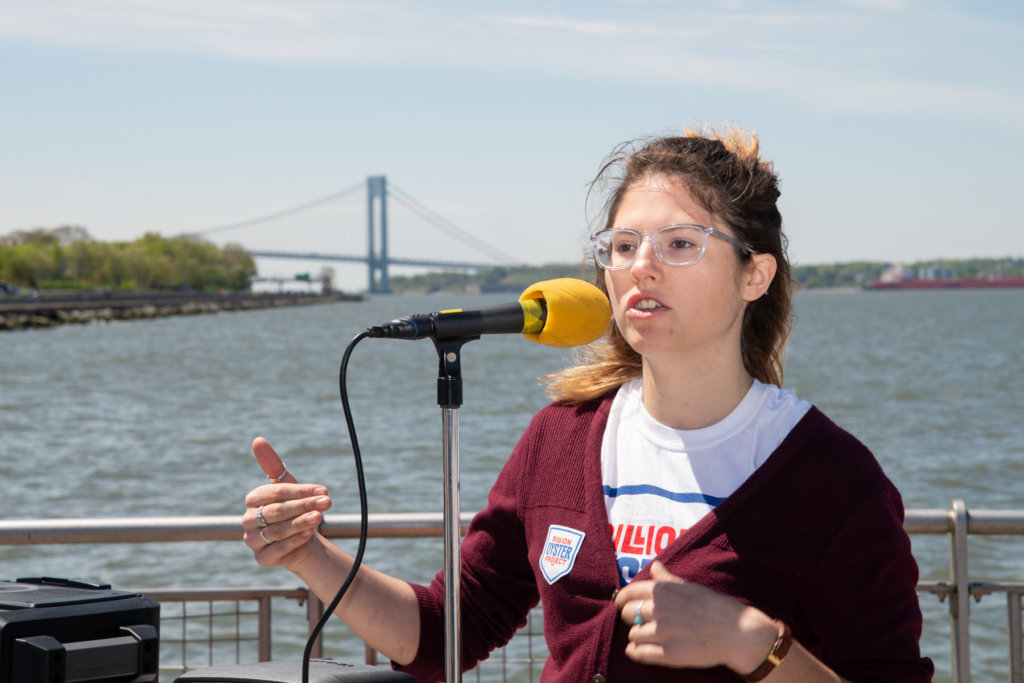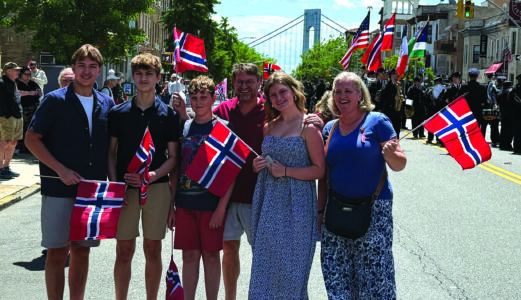It was a grand 200th birthday celebration for Walt Whitman at the Rebirth and Rejuvenation of New York Harbor at the American Veterans Memorial Pier at 69th Street in Bay Ridge.
And it was not only a celebration of Whitman’s life but also recognized the people who tend to the harbor today.
The event, held on Saturday, May 11, was presented by the New York Harbor Channel and featured guest speakers and Whitman experts. It included discussions of current initiatives and issues affecting marine habitats in New York Harbor and the ocean waters of the New York Bight.
The three-hour program opened with a student recitation of Whitman’s “Crossing Brooklyn Ferry,” along with a Whitman commemoration. Some of the key topics discussed were the Billion Oyster Project, whale migration through the New York Bight and Rockaway artificial reef, aquaculture and local initiates.
Whitman, a poet, essayist, journalist and one-time editor of the Brooklyn Eagle, was born on May 31, 1819 in West Hills, New York. Whitman may not have been born in Brooklyn, but he is inextricably forever linked to the borough through his essays and poetry, especially “Crossing Brooklyn Ferry,” which was written years before the existence of the Brooklyn Bridge.
Ahmir Ojelade, the great grandson of Sylvia Moody D’Alessandro, executive director of the Sandy Ground Historical Society Museum on Staten Island, spoke at the commemoration, calling Whitman the poet of New York Harbor. “As he sailed, rowed or canoed along the banks of Staten Island, he interacted with many oyster harvesters,” said Ojelade. “There is no doubt that African American men and women were part of Walt Whitman’s harbor.”
“Sandy Ground, located on the south shore of Staten Island, started out as a farming community, but by 1855 they were an oyster community,” said D’Alessandro. “Oystering came from the Chesapeake Bay and they farmed oysters on Staten Island from 1855 to 1916, when factories were built along the water.”
D’Alessandro explained that as a result of the factories, the oysters became toxic and when some people died from eating them, it was the beginning of the end for the oyster trade in the area. As a result, the Sandy Ground Historical Society was formed.
“In 1999 a group came to us who was trying to restore the harbor with oysters,” D’Alessandro explained. “They said they were going to put 10,000 gallons of oysters back into the community and they asked us if we would help. It was a major attempt to reseed the beds.” She explained that this was the impetus for the Billion Oyster Project.
Agata Poniatowski offered more details about the Billion Oyster Project, a nonprofit organization that is working to restore New York Harbor’s oyster reefs.
“Oysters have a huge role in the history of New York City,” said Poniatowski. “There used to be oyster cafes or sellers on Canal Street, and Pearl Street is actually named because it was lined with oysters. We want to bring them back because they just don’t grow the way they used to.”
Poniatowski explained how oysters are being repopulated into the harbor, used for study purposes, and the role they play in maintaining healthier waterways. “Oysters not only filter our water but provide a lot of space for biodiversity to accumulate,” she said. “Oyster reefs act in a similar fashion in stabilizing our shorelines as well as keeping everything there when storms hit the area.”
Whitman, who was known to start his day with oysters and meat, would certainly be pleased to know that his beloved waters and shorelines were being looked after. Or maybe he does know. After all, he wrote, “I am with you, you men and women of a generation, or ever so many generations hence…”
And what better birthday present could there be for one of America’s greatest poets than clean and revitalized New York Harbor for “Crossing Brooklyn Ferry.”






 Fifth Ave. Fest offers ‘fun’ for families
Fifth Ave. Fest offers ‘fun’ for families  On the Avenue: Norwegians march through Bay Ridge, celebrate heritage
On the Avenue: Norwegians march through Bay Ridge, celebrate heritage